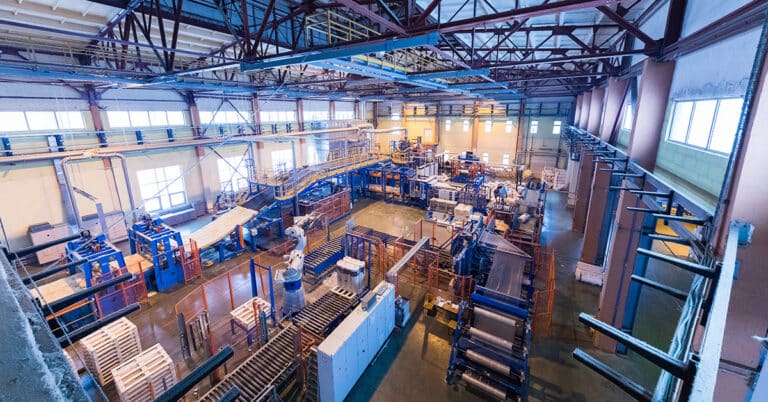Effective MRO data management is the backbone of modern maintenance and operational success. Managing all records associated with maintenance, repair and operations ensures accurate forecasting, improved uptime and cost-effective asset performance. When left disorganized or siloed across systems like CMMS, ERP and spreadsheets, MRO data becomes a barrier to productivity. Inconsistent formats, lack of visibility and outdated records hinder decision-making and inflate inventory costs.
This article explores a structured approach to data management solutions for MRO, showing how streamlined systems can enhance everything from maintenance scheduling to inventory optimization.
Key components of MRO data
MRO data consists of all the records the business keeps relating to asset care. The four main categories are:
- Asset records: Includes description, location, purchase date and price, depreciation/current book value and manuals and instructional materials.
- Maintenance history: All the preventive and breakdown work performed provides a basis for projecting future maintenance needs.
- Inventory and spare parts data: Spare and replacement parts, consumable materials, tools, and records of components sent for rebuild.
- Supplier/vendor information: Details of where MRO items are purchased, plus contractual terms such as holding/placing of consignment inventory.
This data often lives in multiple locations. If the business uses them, much will be in the Computerized Maintenance Management System (CMMS) and the Enterprise Asset Management (EAM) system. Some inventory records may be in the ERP system, while others could be on paper cards or in spreadsheets. Accounting and Purchasing may have other data useful for maintenance.
This siloing of data makes it difficult to develop and act on strategies that reduce costs while improving efficiency and maintenance operations effectiveness. Pulling this data into an MRO master data management system improves visibility and enhances maintenance operations planning; benefits include lower MRO inventory, higher equipment availability and lower costs.
The role of MRO data in asset lifecycle management
MRO data support every phase of the asset lifecycle:
- Acquisition – Historical maintenance trends guide asset selection.
- Operation – Predictive analytics and service planning reduce downtime.
- Maintenance – Linking parts, failure rates and usage helps optimize schedules.
- Disposal – Tracking parts usage and asset status prevents premature disposal.
For example, knowing that a specific pump model has consistent bearing failures after 10,000 hours helps with forecasting and sourcing spares. Integrated systems also reveal commonalities between assets, supporting bulk part procurement and efficient planning. Tools like EAM software benefit significantly when linked to well-maintained MRO master data.
With quality MRO data, each phase can be undertaken efficiently.
Maintenance and breakdown histories support equipment specification and selection, along with spare parts purchasing. Likewise, preventive maintenance is optimized by understanding common failure modes and frequencies for similar equipment. The same data can guide implementation of predictive maintenance technologies like machine health monitoring sensors.
MRO data also defers the point at which disposal becomes the most economical step in the lifecycle of the asset, so extending asset operating life.
A concern in MRO inventory management is identifying obsolete spare parts and guarding against future obsolescence. Linking MRO inventory data to assets helps with identifying the impact of equipment disposal on inventory while also making commonalities between different assets visible.
Linking EAM systems with MRO usually requires specialized software for robust data exchange. The typical process is to establish a single set of MRO master data and share it with the EAM and other systems. This is something an MRO data management software vendor should be able to support.
Best practices for MRO data management
To implement a high-quality MRO data framework, follow these steps:
- Create a single source of truth – One centralized dataset for all users.
- Standardize naming conventions – Use clear, universal part and asset identifiers.
- Cleanse and audit data regularly – Identify duplicates, errors and missing fields.
- Establish data governance workflows – Assign roles and accountability for updates.
- Integrate with key systems – Ensure the ERP, CMMS and EAM platforms access the same MRO data.
The key to harnessing MRO information is to establish a single source of master data accessible by the people and systems that need it. This starts with standardizing the nomenclature used, which prevents duplication, followed by MRO data cleansing to correct errors and omissions.
Maintaining the MRO master data as the single source of truth requires following good data governance principles. This means introducing procedures and workflows that prevent inconsistencies and ensure effective master data management. These should be supplemented with regular data audits to verify compliance and identify any procedural problems.
Integration with other business systems is a critical aspect of MRO data governance. If the ERP, EAM and other systems are unable to access the MRO master data, users will create duplicate systems and undermine effective MRO master data management.
These steps help build a foundation for master data governance, ensuring long-term usability and integrity. Governance frameworks should also include regular audits and continuous data quality checks to avoid erosion over time.
MRO data and maintenance scheduling optimization
Data-driven scheduling reduces unplanned downtime and reactive maintenance. By identifying shared components like motors or valves across different machines, teams can:
- Predict wear patterns using operating conditions and usage hours.
- Improve preventive maintenance accuracy.
- Reduce unnecessary part orders and labor hours.
- Support a shift toward predictive maintenance strategies using sensor data.
Good data is essential for planning and scheduling preventive maintenance work. While data from specific machine types is the most useful, there are benefits from identifying component commonalities between different items of equipment.
For example, the same pumps, motors, bearings and valves could be used on a wide variety of machinery. Information on wear and failure rates, taken in conjunction with running hours and specific operating and environmental conditions, can improve the accuracy of their predicted lifetimes.
MRO data, plus the ability to anticipate service lifetimes and failure rates, improves PM scheduling, in turn reducing downtime and breakdowns. Adding machine health monitoring sensors provides another layer of data and facilitates a move towards predictive maintenance.
With such an approach to industrial asset management, maintenance work can be delayed to the last possible moment. The result: higher uptime, lower costs and better resource planning. High-quality product data and failure trend analysis are critical for achieving these gains.
Inventory management and optimization through MRO data
Optimizing MRO parts inventories poses several challenges.
- Inventory is costly: Money is tied up and space is needed for storage.
- Low-inventory risks: Extended machine downtime and expedited shipping costs.
- Erratic consumption: Equipment usage and the maintenance effort expended are driven by many factors and are uneven throughout the year.
- Risk of obsolescence: As industrial assets are retired, the parts associated with them may no longer be needed.
- Repairable parts: Need careful tracking to log repair status, inventory levels and locations.
A single source of MRO data helps in managing all these challenges. Better visibility into inventory and the MRO supply chain reduces ordering and storage duplication and creates cost-saving opportunities. Likewise, links to predictive maintenance systems and maintenance planning allow timely ordering without incurring expedited shipping charges.
Managing repairable components and subassemblies is an aspect of maintenance often lacking rigorous controls. Effective single source data management provides better visibility over such MRO parts, helping reduce waste and lower inventory levels.
Key steps in achieving these improvements are:
- Introduce standardized naming conventions
- Create connections between parts and assets to reduce obsolescence waste
- Implement demand/usage/consumption forecasting
Leveraging big data and cloud computing for MRO management
Bringing disparate MRO datasets together to create a single set of master data creates a “big data” challenge and opportunity. “Big data” refers to extremely large datasets, especially those where data is unstructured or only partially structured. Big data in manufacturing can relate to quality, process optimization, supply chain management, maintenance or any other aspect where large volumes of data require processing for actionable intelligence.
The analytical tools used for processing big data typically reside on remote server, as they and the datasets are too large and complex for individual PCs. Furthermore, the cloud provides storage capacity and simultaneously allows access by those who need to use the information.
In the case of MRO data management, cloud computing enables cost-effective storage along with the analytic tools to extract valuable insights into aspects of maintenance operations. For example, this could include:
- Spare parts consolidation: Identify instances of identical parts stored under different names in separate locations.
- Consolidated MRO procurement: Find where identical components are purchased from different vendors.
- Improve PM scheduling: Spot patterns in wear rates related to environmental and processing conditions.
Benefits include higher storeroom efficiencies, lower inventories, more accurate MRO classification and streamlined master data governance.
Partnering with ATS for MRO data optimization
Industrial MRO relies upon and generates large volumes of data. Effective data management can unlock significant improvement in cost control and operational efficiency, but only if appropriate systems are put in place. MRO data management requires a disciplined, systematic approach to every aspect of data governance, from audits to data enrichment.
Many manufacturers find the best way of unlocking the benefits of MRO data is by partnering with an organization experienced in unraveling and organizing the many existing datasets. As the leader in outsourced data cleansing and maintenance, ATS delivers enterprise-grade data management solutions that address common MRO pain points:
- Data cleansing and unification – Standardize, validate and eliminate silos.
- System integration – Ensure CMMS and EAM platforms work from shared datasets.
- Reliability-centered maintenance – Link data insights to uptime and cost reductions.
As a leader in MRO asset management, ATS supports comprehensive transformation—from inventory visibility to master data enrichment—with strategies tailored to empower organizations to operate with clarity, control and confidence.
Our services run from MRO asset management to comprehensive maintenance services that increase availability and reduce costs. Contact us to learn more.






